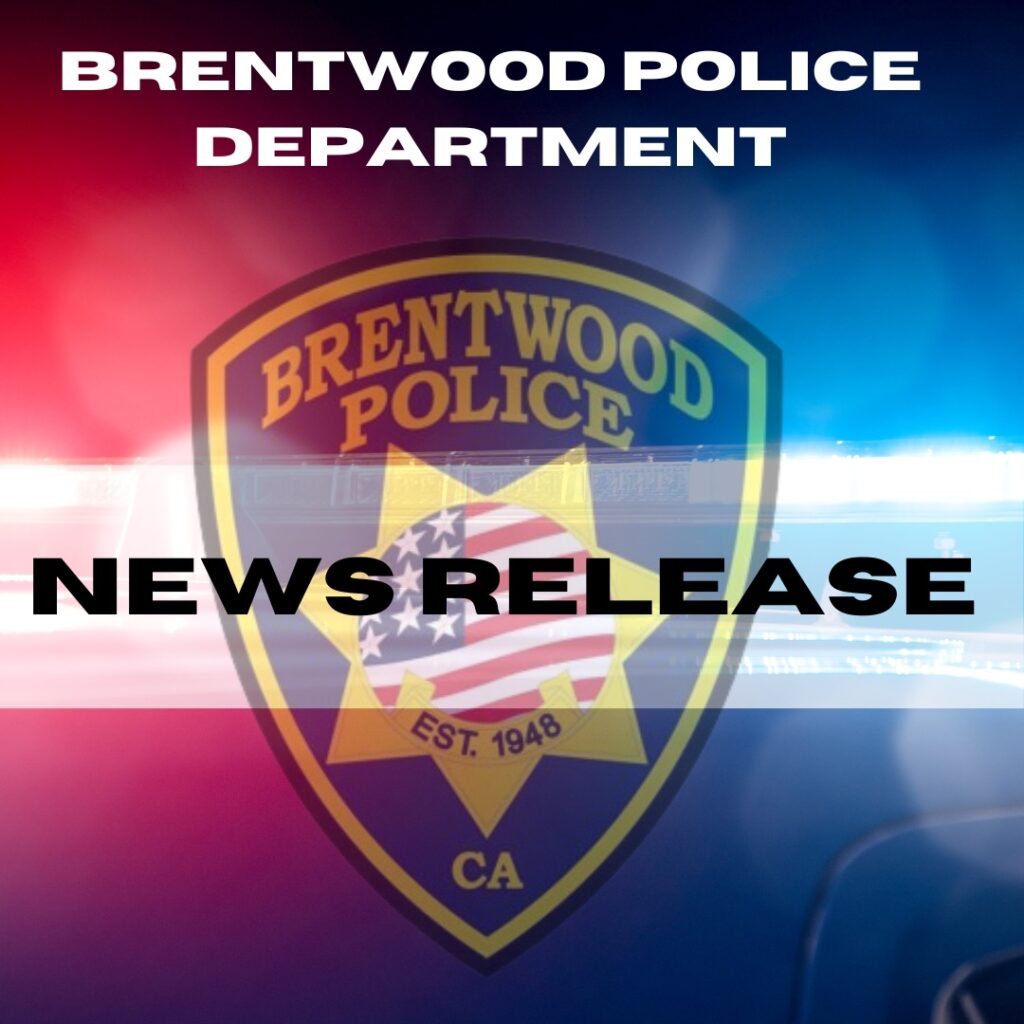
Antioch Councilman Mike Barbanica (Source: Barbanica for Supervisor campaign) and State Senator Steve Glazer. (official photo)
“Mike Barbanica is a no-nonsense leader…” – Steve Glazer
ANTIOCH, CA—Local small businessman, housing expert and Antioch Councilman Mike Barbanica announced receiving the endorsement of California State Senator Steve Glazer (D-Orinda) in his race for Contra Costa County Board of Supervisors in District 5. Senator Glazer, who represents Contra Costa and Alameda Counties, is recognized for his independence and problem-solving abilities.
“Mike Barbanica is a no-nonsense leader with the skills and expertise to effectively impact the issues facing us in Contra Costa County,” said Senator Glazer. “Mike shares my belief that politics is about service and progress, and I’m confident he’ll bring a sense of civility and respect for diverging opinions that we need more of in elected office.”
“Senator Glazer is an icon of principled leadership, someone who believes in prioritizing results over rhetoric and people over politics,” said Barbanica. “That approach can help us improve our homeless, housing, and crime issues, and that will be my approach on the Contra Costa Board of Supervisors.”
Barbanica and his wife, Kristine, operate a small business, Blue Line Property Group, helping families access housing. Mike is a retired Police Lieutenant and decorated officer who served for over 20 years.
Barbanica is running for the open seat in Contra Costa’s District 5, which cover the northern portions of Contra Costa, running from Hercules to Antioch, and includes Martinez and Pittsburg.
For more information visit www.mikebarbanica.com.
Read More
Terryonn Deshawn Pugh, Trent Allen, Eric James Windom and Keyshawn Malik McGee were among 48 gang members and associates arrested and/or contacted by Antioch and Oakland Police Departments during Operation Windstar in 2021. Source: APD
Case at the center of Racial Justice Act Violations from police text messages
Defendants receive 13 years and 8 months to 20 years in prison
By Ted Asregadoo, PIO, Contra Costa District Attorney’s Office
Martinez, California – On May 6th, the Contra Costa District Attorney’s Office reached a resolution in the 2021 murder of Arnold Marcel Hawkins and the attempted murder of Aaron Patterson. This murder was a seminal case in Contra Costa County regarding the California Racial Justice Act.
The defendants, 23-year-old Terryonn Deshawn Pugh, 25-year-old Eric James Windom, 25-year-old Keyshawn Malik McGee, and 23-year-old Trent Allen, were charged by the Contra Costa District Attorney’s Office on a six-count felony complaint with enhancements in November 2021 (People v. Pugh, Windom, McGee, and Allen).
On March 9th, 2021, the four defendants engaged in a shooting in the City of Antioch wherein they discharged firearms at a vehicle in a residential neighborhood. The barrage of bullets killed Arnold Hawkins and injured another person. (See related article)
As previously reported, on March 31, 2021, Windom was arrested in Merced, and McGee was arrested in Los Angeles, for the attempted murder and drive-by shooting perpetrated on Aspen Way in Antioch.
Later that morning, in Antioch, a fugitive apprehension team consisting of the Antioch Problem Oriented Policing Team and undercover detectives, attempted to contact Trent Allen as a passenger in a vehicle. Allen fled on-foot through a business parking lot and was chased through a residential neighborhood. The fugitive apprehension team caught Allen and took him into custody for his role in the attempted murder and drive-by shooting on Aspen Way.
Later the same day, the Antioch fugitive apprehension team located Terryonn and Armonie Pugh, both parolees-at-large, hiding out in an apartment complex in American Canyon, between Vallejo and Napa. With the assistance of American Canyon PD, and the Napa County Sheriff’s Office, Terryonn Pugh was taken into custody as he tried to flee to a waiting vehicle. Armonie Pugh was taken into custody, without incident, pursuant to a search warrant for the location. During the search, a firearm and a large amount of cash were seized. Terryonn Pugh was additionally arrested for the attempted murder at the Lone Tree Way gas station, and for his part in the attempted murder and drive-by shooting on Aspen Way. (See related article)
Also, as previously reported, the four were part of the arrests of 48 gang members and associates during a complex, six-month investigation involving 24 agencies, for murder, attempted murder and illegal guns. The effort removed 40 firearms, including 15 “ghost guns” off the streets and over $100,000 in cash. (See related article)
Unrelated to the shooting that killed Arnold Hawkins, a joint District Attorney’s Office/FBI investigation was initiated into allegations of police misconduct by officers in the Antioch and Pittsburg Police Departments. During that separate investigation in early 2023, investigators found a trove of racist text messages exchanged by Antioch police officers. These messages revealed that while investigating the murder suspects that took the life of Arnold Hawkins, the officers were sending and receiving messages about the murder suspects that included racist slurs, images, and written descriptions. The text messages violated the California Racial Justice Act (RJA) — a law that prohibits bias, animus, and racially discriminatory language based on race, ethnicity, or national origin in charges, convictions, and sentences. (See related articles here and here)
In March 2023, the District Attorney’s Office notified the court and the defense bar of the potential RJA violations as it related to open and adjudicated cases. Moreover, as part of the discovery process, the District Attorney’s Office disclosed investigative reports detailing incidents of racial bias and animus in the text messages sent and received by some members of the Antioch Police Department. (See related article)
Having already filed a motion challenging disproportionate filings in murder cases under the RJA, the defendants filed a second challenge predicated upon the racial bias exhibited by the Antioch police officers investigating the murder case. After multiple hearings, the court dismissed the special circumstance allegations, as well as the gang and firearm enhancements on February 5th, 2024. The case was set for trial when a resolution was reached between the District Attorney’s Office and the defendants.
In resolving the case, the four defendants have entered pleas of no contest to the following:
Terryonn Pugh: No contest on two counts of attempted murder and voluntary manslaughter – with an additional punishment for the use of a firearm. He will be sentenced in Martinez on May 8th, 2024, to 20 years in state prison.
Eric Windom: No contest on one count of attempted murder and voluntary manslaughter — with an additional punishment for the use of a firearm. He will also serve a concurrent term for a robbery that is unrelated to this case. Windom will be sentenced in Martinez on May 8th, 2024, to 19 years in state prison.
Trent Allen: No contest on one count of attempted murder and voluntary manslaughter — with an additional punishment for the use of a firearm. He will also serve a concurrent term for an unrelated robbery. Allen will be sentenced in Martinez on May 10th, 2024, to 19 years in state prison.
Keyshawn McGee: No contest on one count of attempted murder and voluntary manslaughter — with an additional punishment for the use of a firearm in both the murder and voluntary manslaughter charges. McGee will be sentenced in Martinez on May 10th, 2024, to 13 years, 8 months in state prison.
“Seeking justice for these serious offenses was complicated by violations to the Racial Justice Act,” said District Attorney Diana Becton. These lengthy prison sentences ensure accountability and promote community safety. Hopefully, the outcome will help to heal the loss the victims and survivors experienced.”
Case No. 01001976380 | The People of the State of California v. Pugh, Windom, McGee, and Allen
Allen D. Payton contributed to this report.
Read More
Former California Supreme Court Chief Justice Rose Bird (Photo: CSCHS) and Senator Steve Glazer. (Official photo)
For reversing death sentences; plaques to be unveiled for Rose Bird at new plaza named for her in Capitol World Peace Rose Garden during Tuesday ceremony
Glazer was her spokesman during her failed 1986 retention campaign
SACRAMENTO – Former California Supreme Court Chief Justice Rose Elizabeth Bird will be recognized Tuesday, May 7, for her trailblazing work as a jurist – the first such public dedication in California.
Current Chief Justice of the California Supreme Court, Patricia Guerrero, and retired Chief Justice Tani Cantil-Sakauye, will lead the 10 a.m. unveiling of two plaques at the new Chief Justice Rose Elizabeth Bird Justice For All Plaza at the State Capitol World Peace Rose Garden 25 years after her death in 1999.
Speakers will also include Stephen Buehl, former Justice Bird’s chief of staff, Senator Nancy Skinner, D-Berkeley, the chair of the California Legislative Women’s Caucus, and Kathryn Meola, president of the Women Lawyers of Sacramento.
“Honoring Chief Justice Rose Elizabeth Bird is long overdue,” said Senator Steve Glazer, D-Contra Costa, who authored a resolution, SCR 47 (2023) to create her place of honor in the Capitol Rose Garden. Senator Glazer was Bird’s spokesman during her retention campaign in 1986. “We now have the benefit of time in recognizing her courage and integrity in upholding the Constitution and rule of law – especially in protecting the poor and oppressed.”
Justice Bird was the first woman Chief Justice of California; the first woman Chair of the Judicial Council; the first woman on a California Governor’s Cabinet and the first woman deputy public defender in Santa Clara County. She served as the Chief Justice under Governor Jerry Brown from 1977-1986.
She was also the first and only chief justice in state history to be voted out of office. Bird and three other justices voted to reverse murderers’ sentences, and she, two of her colleagues, Reynoso and Grodin, were subsequently voted off the state supreme court. Bird was overwhelmingly removed in the November 4, 1986, election by a margin of 67% to 33%.
What: The Unveiling of the Chief Justice Rose Elizabeth Bird Justice For All Plaza
When: May 7, 2024, 10 a.m.
Where: State Capitol World Peace Rose Garden
Speakers: Senator Steve Glazer; Patricia Guerrero, Chief Justice of California; Tani Cantil-Sakauye, retired Chief Justice of California; Stephen Buehl, chief of staff to Chief Justice Rose Bird, Senator Nancy Skinner, D-Berkeley, the chair of the California Legislative Women’s Caucus, and Kathryn Meola, president of the Women Lawyers of Sacramento.
Livestream: https://www.youtube.com/watch?v=yaE6NUxkuv0
https://sd07.senate.ca.gov/video/honoring-chief-justice-rose-elizabeth-bird
Allen D. Payton contributed to this report
Read MoreBy Town of Danville
Can’t decide where to go for Cinco de Mayo? Visit Downtown Danville for restaurants, shops, and fun along Hartz Avenue. There is plenty of free parking along the street or in our municipal lots, which also make for great rideshare pickup/dropoff locations! We’ve been making improvements Downtown, so come check it out while enjoying live music and food specials at our local restaurants. And celebrate the end of National Small Business Week by stopping in one of our many charming shops along your Cinco de Mayo stroll.
#NationalSmallBusinessWeek #livelocallydanville #shopsmall #dinelocal #cincodemayo
Read MoreDistrict Attorney files charges, bail set at $2 million
By Lt. Drew Olson, Walnut Creek Police Department
On April 16, 2024, Walnut Creek Police Patrol Officers and Detectives arrested Marc Alexander Simon, a 27-year-old male from Walnut Creek, (born Christmas Day in 1996) in connection with an attempted kidnapping of a child at the downtown library on North Broadway. The incident occurred on April 11, and officers and detectives were able to identify the suspect and arrest him.
The case was presented to the District Attorney’s Office and the above charges were filed against Simon. Simon remains in custody at the County Jail with a bail set at $2,000,000.
Case #: 24-9848
Charges:
PC 288(a) – Two counts of lewd act upon a child,
PC 664/207(b) – Attempted kidnapping for child molesting,
PC 311.11(c)(1) – Possession of over 600 images of child pornography
Although the police department does not suspect there to be additional victims, we are releasing a photo of the suspect and asking the public to call us if you or someone you know has been victimized by him.
According to the Contra Costa County Sheriff’s Office, the five-foot, six-inch tall, 160-pound Simon is Hispanic, is being held in the Martinez Detention Facility. However, according to Vinelink, which obtains information from the Sheriff’s Office, Simon is listed as White.
If you or someone you know has information about this case, we encourage you to contact the Walnut Creek Police Department at 925-943-5844 or call the Anonymous Tip Line at 925-943-5865.
Allen D. Payton contributed to this report.
Read More

The suspect stole more than $5,100 of merchandise from the Bath & Body Works store in the Century Plaza. Photos: Pittsburg PD
Stole over $5,100 in merchandise
By Pittsburg Police Department
Dedication and Hard Work Lead to Success
Officer Towner from the Pittsburg PD, who leads the commercial/retail enforcement unit, spearheaded a thorough investigation spanning several weeks into retail and shoplifting incidents at a local Bath & Body Works store in the Century Plaza at 4225 Century Blvd., resulting in a loss exceeding $5,100. During her investigation,
Officer Towner identified a consistent pattern and calculated approach followed by the suspect. Officer Towner successfully apprehended the suspect through her diligence and dedication during one of his attempted thefts. The suspect was arrested and booked for his crimes, and a large portion of the stolen goods was recovered.
This case highlighted the complexities of dealing with retail theft perpetrators and stressed the significance of collaborating with the local business community. Officer Towner’s unwavering commitment exemplified the Pittsburg Police Department’s dedication to public safety and combating retail crime.
Read MoreBy Sgt. Chris Souza, Special Victims Unit, Concord Police Department
CPD CASE #23-08633
On Monday, April 29, 2024, the Concord Police Department Special Victims Unit (SVU) arrested 41-year-old Chi Ngoc Vu for multiple counts of sexual assault. Vu is the owner of “Chi Hair Salon” located at 4701 Clayton Road in Concord. The sexual assaults occurred inside of the hair salon business.
The case was presented to the District Attorney’s Office who filed the following charges against Vu:
PC 261(a)(2) – Forcible Rape
PC 261.5(d) – Unlawful Sexual Intercourse
PC 287(c)(2)(C) – Forcible Oral Copulation
PC 287(b)(2) – Oral Copulation of Minor Under 16
Two Counts of PC 288(c)(1) – Lewd Acts on a Child
Vu remains in custody on $275,000 bail. The Concord Police Department has reason to believe that Vu may have victimized others.
We are releasing his booking photo and urge anyone with additional information to call Detective Huffmaster at (925) 671-5080.
According to localcrimenews.com, Vu is a resident of Pittsburg.
Allen D. Payton contributed to this report.
Read More
Two burglary suspects arrested after being found with the stolen safe from a Brentwood business in the in trunk of their car on Wed., April 24, 2024. Photos: Brentwood PD
By Brentwood Police Department
On Wednesday April 24, 2024, around 11:45PM, Brentwood officers responded to 51 Sand Creek Road, the location of the Dollar Tree store, for a report of an alarm going off in the business. While officers were responding, Dispatch told officers that a safe was stolen from the business and the suspects had just fled from the scene in a car.
Brentwood officers who were circulating the area observed a car traveling at a high rate of speed in the immediate vicinity and the same car was subsequently found unoccupied in a nearby Court.
Officers began searching the area and found 27-year-old Alfredo Jose Barrera of Turlock, and 26-year-old Alejandro RamirezSilva of Ceres, hiding in nearby bushes.
Both Barrera and RamirezSilva were taken into custody, and the car they were associated to contained the stolen safe and burglary tools.
Barrera and RamirezSilva were placed under arrest for Burglary, Conspiracy to Commit a Crime, Possession of Burglary Tools, and other charges. Barrera also had outstanding warrants from another county.
Barrera and Ramirez Silva were transported to the Martinez Detention Facility for booking.
This successful investigation stands as a testament to the dedication and response of our officers in ensuring the safety and security of our community and businesses.
According to the Contra Costa Sheriff’s Office, as of April 26, RamirezSilva was no longer in custody and as of April 29, Barrera was also out of custody having been cited and released.
According to localcrimenews.com, Barrera had previously been arrested in 2021 by Modesto PD and in 2022 by Tracy CHP for driving with a suspended license for reckless driving and driving while using a cellular device.
Allen D. Payton contributed to this report.
Read MoreDoesn’t consult at least four local news publishers in his district before developing legislation
SACRAMENTO – A data extraction mitigation fee on major Internet corporations would raise $500 million to fund employment credits for news organizations across California under legislation Senator Steve Glazer, D-Contra Costa, outlined Wednesday at a press conference. Joining Senator Glazer were news publishers representing hundreds of community, and ethnic outlets.
Amid the backdrop of newsrooms continuing a downward spiral with staff layoffs, cutbacks in resources or outright closures, Senator Glazer said “we must create a new framework to ensure that newsrooms keep our citizens informed and democracy accountable to the people.”
The bill, SB 1327, is co-authored by Senate President Pro Tem Mike McGuire, D-Santa Rosa, and Senators Catherine Blakeslee, D-Encinatas, Steve Padilla, D-San Diego, and John Laird, D-Santa Cruz.
Senator Glazer’s proposal would create a data extraction mitigation fee on the largest online companies, or platforms, with a minimum of $2.5 billion in revenues. The Data Extraction Mitigation Fee will be based on the value that online platforms derive by extracting personal and economic data from those who visit the company’s web pages.
“News organizations and their advertising revenues have been hollowed out by these online platforms,” Senator Glazer said. “They should mitigate this damage and this new bill will do exactly that.”
The data extraction mitigation fee closes a loophole that allows online platforms to avoid taxation on the value of the barter in which they engage with customers who, in effect, trade access to their personal data for the opportunity to use a website. While this kind of economic relationship has helped fuel innovation and access to information, it has also created what economists call “negative externalities” – or harm to third parties who are not directly a part of that exchange.
In this case, the harm is being done to local news organizations and, more broadly, to all Californians who depend on independent local news coverage of events that affect their daily lives and the democratic form of government – the foundation of our society.
“You cannot have informed voters if there is no one to tell them what their government is doing,” said Senator Blakespear. “We’ve seen the journalism industry devastated in recent years, and we need to do something about that. SB 1327 is a smart, sensible way to fund local journalism.”
Unofficial estimates indicate that a fee level equivalent to the current statewide sales and use tax rate could generate almost $1 billion per year. Of that amount, 39.5% would go to K-14 education as required by Proposition 98 and 1.5% would go to state budget reserves as required by Proposition 2.
In addition to the constitutional requirement to use a portion of the fee revenue for education and budget reserves, some of the revenue would also go to backfill the state’s general fund for revenue lost when the companies deduct the cost of the fee as an expense on their income tax returns. Some of the money would also go to the Franchise Tax Board for administration and collection costs. That would leave approximately $500 million annually to support local journalism.
While Congressman Mark DeSaulnier held a Zoom meeting with local news publishers in Contra Costa County to provide input on his proposed federal legislation in 2021, neither Glazer nor his staff reached out to at least four publishers in the county for input on his bill before developing it. They include Tamara Steiner, publisher of the Concord and Clayton Pioneer, Mike Burkholder, publisher of ContraCostaNews.com, Greg Robinson, publisher of The Press covering Brentwood, Oakley and Discovery Bay, and Allen Payton, publisher of the Antioch Herald and Contra Costa Herald.
As he did with DeSaulnier’s bill, Payton twice asked the state senator if he would include an exception in the tax code to allow non-profit owners of local media to continue endorsing or opposing candidates and ballot measures, and publishing editorials. But that was not included in the state legislation.
However, Glazer did gather support from other news organizations and sought their input prior to announcing his legislation.
Steve Waldman, president of Rebuild Local News, a nonpartisan, nonprofit coalition of more than 3,000 locally-owned and nonprofit, community-based newsrooms, said the legislation would be a major breakthrough for the news industry – and for communities that are starving for local news.
“We vigorously applaud Sen. Glazer’s proposed local news employment credit, which would truly revitalize community news in California,” Waldman said. “It is a transformative proposal. It would dramatically improve the capacity of newsrooms to cover their communities and is especially attentive to the role of medium and small-sized outlets.
Waldman added: “An employment credit places the incentives in the right place: hiring of local reporters. It’s non bureaucratic. It helps for-profits and nonprofits, print, digital and broadcast, urban and rural. It’s future friendly so new innovators can plug in too. And it does all this while being compatible with the First Amendment and the need to protect the editorial independence of news outlets.”
Much like mitigation fees imposed on companies that put chemicals into the environment to make their products or develop projects that burden our roads and schools, this fee assigns the cost of saving local journalism to those firms whose economic activity is causing the news industry’s demise.
The program would also distribute at least $25 million annually for non-profit local news organizations that don’t benefit from tax credits. Half of that amount would be reserved for those news organizations with fewer than 10 full-time employees. Additional funds would be provided to journalism training programs.
To qualify for the tax credit, news organizations would have to have their primary circulation or distribution in California and their online news primarily consumed within the state. They would publish in the current and previous year and carry media liability insurance. Broadcasters would have to be licensed by the Federal Communications Commission to broadcast in the state to claim the credit.
All qualifying news organizations would be eligible for tax credits based on the number of working journalists they have, the credits increasing with every new hire. News organizations that aren’t profitable would be eligible for tax refunds, as would non-profit news organizations.
Matt Pearce, president of Media Guild of the West, said in a letter of support that the bill hits the right tone in its support of smaller publications and outlets.
“The journalism jobs tax credit is well structured, nondiscriminatory in a way that avoids government favoritism, and incentivizes local journalist employment,” Pearce wrote. “Smaller publishers with fewer than 10 employees – which includes many of California’s ethnic media publishers – would, appropriately, receive a slightly larger share of support than larger newsrooms. Freelance journalists are appropriately recognized and economically supported at a level that would not incentivize workforce fissuring. Employers that provide benefits to their employees would receive more support than those that didn’t.”
Laura Rearwin Ward, publisher of the Ojai Valley News in Ojai, CA near Santa Barbara and Ventura, praised Senator Glazer’s proposal to fund small news publications through tax credits and a data mitigation fee.
“Senator Glazer’s bill gives support to those most in need — California’s print and digital local, independent, and ethnic media,” Rearwin Ward said. “And the data mitigation fee appropriately focuses on large online platforms, such as Google, which profit from the use of content they do not create, and user data they have utilized in a one-sided barter arrangement. This fee will mitigate the harm done to the California news industry through loss of advertising revenue. This fee closes a loophole that has allowed online platforms to avoid taxation on the value of that barter. The visible damage to California is clear to see — huge losses in professional local news reporting, resulting in news deserts and ghost papers.”
Lance Knobel, CEO and co-founder of Cityside Journalism Initiative, the nonprofit that publishes Oaklandside, Berkeleyside and Richmondside, said the legislation could be a game-changer.
“Senator Glazer’s local news employment credit tackles the core problem for local journalism in California: how can we sustain and even increase the number of reporters and editors working in our community? If passed it would be truly transformative for independent local news organizations like ours,” Knobel said.
Ken Doctor, Local Founder and CEO of Santa Cruz-based publication Lookout, said the proposed tax credits would be a critical lifeline for local news organizations.
“The best solution for California’s local news crisis is simple: more experienced journalists offering trusted and trustworthy reporting to and for communities up and down the state,” said Doctor, also an analyst with Newsonomics. “Sen. Glazer’s bill recognizes that payroll tax credits are the best way to fund such a revival, without having the state pick winners or losers. As the legislature debates how to fund such credits, the focus on them is the one essential going forward.”
“We have seen a dramatic devastation of the news eco system, and with it a coarsening of our politics that have led many to worry whether our democracy can survive,” Senator Glazer said. “In so many cases, stories are not being covered in communities, large and small. We often don’t know what politicians and other community leaders are doing – many of the checks and balances have vanished – because nobody is there to cover them. We want to restore accountability and strengthen our democracy by reviving newsrooms.”
Allen D. Payton contributed to this report.
Read More
While speeding on Balfour Road; bonded out of custody; police seek witnesses
By Lt. Miguel Aguiar, Brentwood Police Department
On April 30, 2024, at around 9:26 PM, Brentwood officers responded to the report of a traffic collision involving multiple vehicles on westbound Balfour Road at McViking Way, between the two shopping centers along Fairview Way. Preliminary investigation revealed, the driver of a Chevy Silverado, identified as Zachary Alan Frances Rau, a 26-year-old male from Antioch, was reportedly driving at a high rate of speed, westbound Balfour Road before colliding with a Toyota RAV-4, driven by a 31-year-old male from Brentwood. The Toyota then collided with a Honda HR-V, driven by a 37-year-old male from Brentwood.
A passenger in Rau’s vehicle, a 26-year-old male from Antioch, sustained serious injuries and was transported to a local hospital for treatment and is expected to survive.
The driver of the Toyota RAV-4 was unconscious and unresponsive when officers arrived on scene. He sustained major injuries and required extrication from the vehicle before being airlifted to a local hospital, where he is being treated for his injuries and remains unstable.
The driver of the Honda HR-V was not injured.
Rau was treated a local hospital for minor injuries and subsequently arrested and booked at the Martinez Detention Facility for suspicion of driving under the influence of alcohol, causing injury.
The names of all others involved, and any additional information are being withheld at this time and the investigation is ongoing.
According to the Contra Costa County Sheriff’s Office, Rau is white and as of 12:30 p.m. on Thursday, May 1, he had bonded out of custody.
Anyone with further information or if you witnessed the collision and have not already been interviewed, please contact the Brentwood Police Department Traffic Safety Unit at (925) 634-6911.
Allen D. Payton contributed to this report.
Read More





















